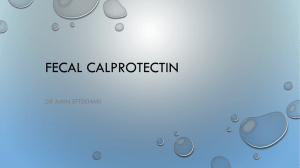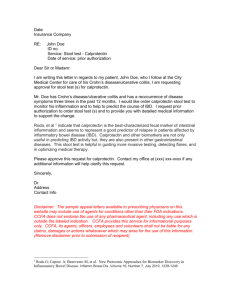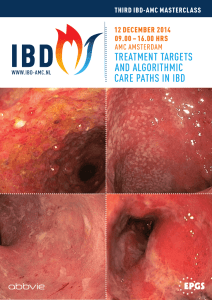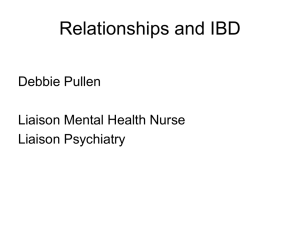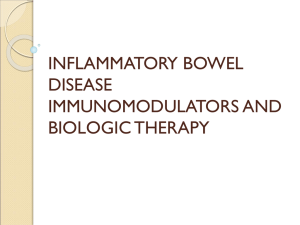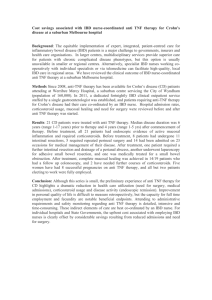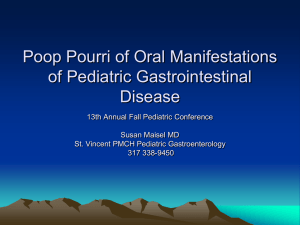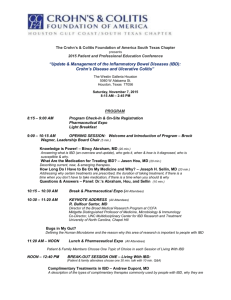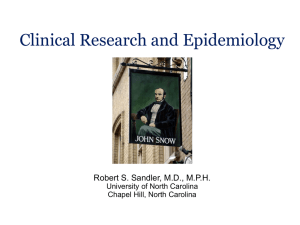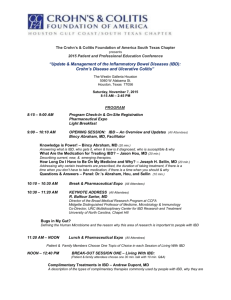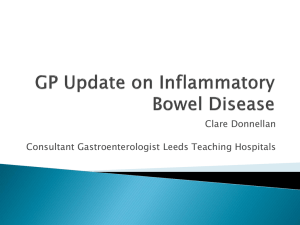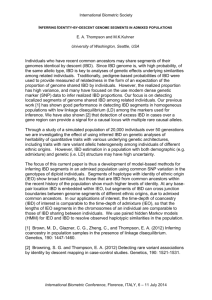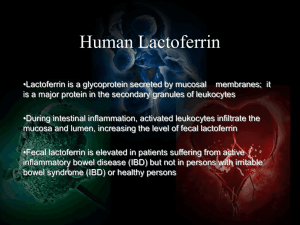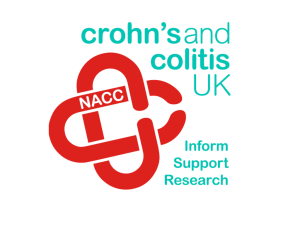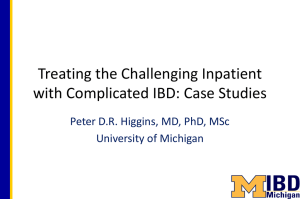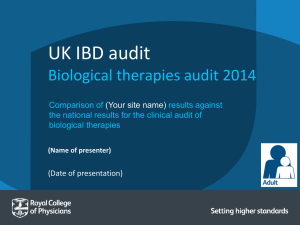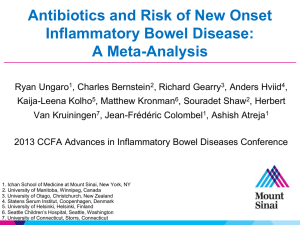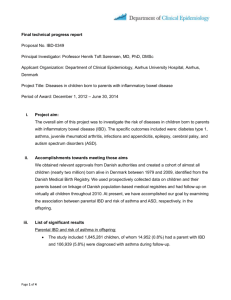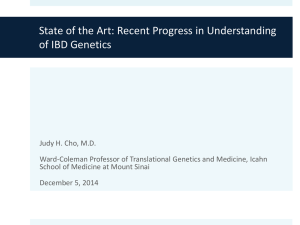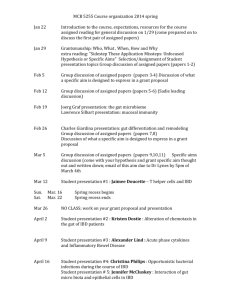Faecal Calprotectin is a Cost-Effective Method of Assessing Activity
advertisement
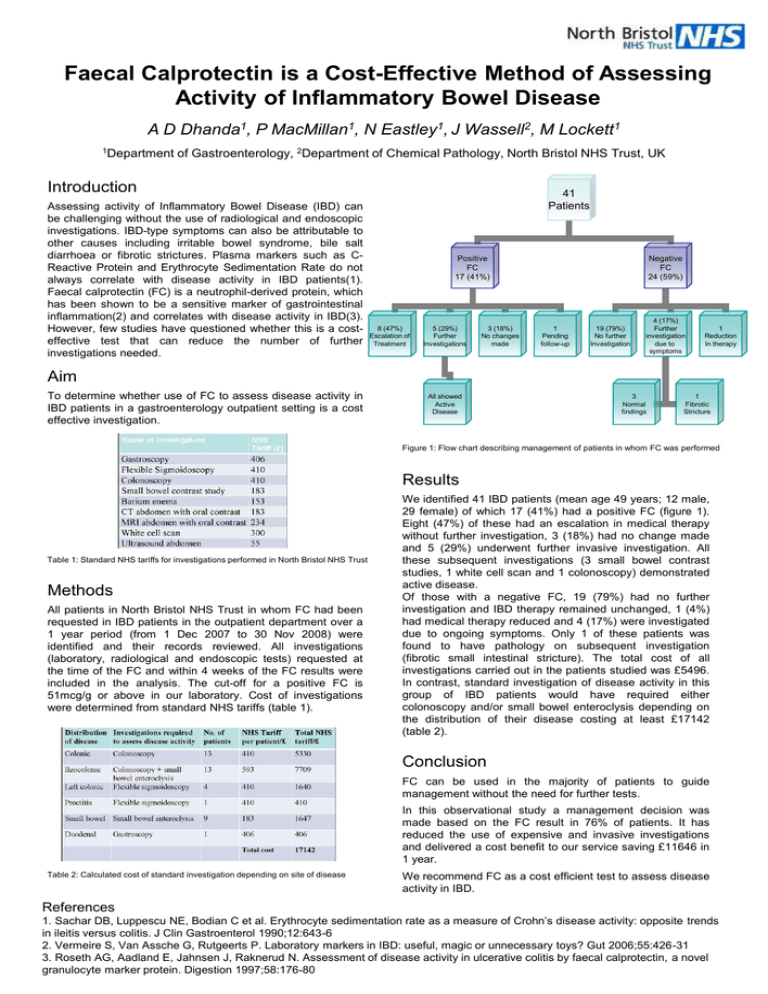
Faecal Calprotectin is a Cost-Effective Method of Assessing Activity of Inflammatory Bowel Disease A D Dhanda1, P MacMillan1, N Eastley1, J Wassell2, M Lockett1 1Department of Gastroenterology, 2Department of Chemical Pathology, North Bristol NHS Trust, UK Introduction Assessing activity of Inflammatory Bowel Disease (IBD) can be challenging without the use of radiological and endoscopic investigations. IBD-type symptoms can also be attributable to other causes including irritable bowel syndrome, bile salt diarrhoea or fibrotic strictures. Plasma markers such as CReactive Protein and Erythrocyte Sedimentation Rate do not always correlate with disease activity in IBD patients(1). Faecal calprotectin (FC) is a neutrophil-derived protein, which has been shown to be a sensitive marker of gastrointestinal inflammation(2) and correlates with disease activity in IBD(3). However, few studies have questioned whether this is a costeffective test that can reduce the number of further investigations needed. 41 Patients Positive FC 17 (41%) 8 (47%) Escalation of Treatment 5 (29%) Further Investigations 3 (18%) No changes made Negative FC 24 (59%) 1 Pending follow-up 19 (79%) No further Investigation 4 (17%) Further investigation due to symptoms 1 Reduction In therapy Aim To determine whether use of FC to assess disease activity in IBD patients in a gastroenterology outpatient setting is a cost effective investigation. All showed Active Disease 3 Normal findings 1 Fibrotic Stricture Figure 1: Flow chart describing management of patients in whom FC was performed Results Table 1: Standard NHS tariffs for investigations performed in North Bristol NHS Trust Methods All patients in North Bristol NHS Trust in whom FC had been requested in IBD patients in the outpatient department over a 1 year period (from 1 Dec 2007 to 30 Nov 2008) were identified and their records reviewed. All investigations (laboratory, radiological and endoscopic tests) requested at the time of the FC and within 4 weeks of the FC results were included in the analysis. The cut-off for a positive FC is 51mcg/g or above in our laboratory. Cost of investigations were determined from standard NHS tariffs (table 1). We identified 41 IBD patients (mean age 49 years; 12 male, 29 female) of which 17 (41%) had a positive FC (figure 1). Eight (47%) of these had an escalation in medical therapy without further investigation, 3 (18%) had no change made and 5 (29%) underwent further invasive investigation. All these subsequent investigations (3 small bowel contrast studies, 1 white cell scan and 1 colonoscopy) demonstrated active disease. Of those with a negative FC, 19 (79%) had no further investigation and IBD therapy remained unchanged, 1 (4%) had medical therapy reduced and 4 (17%) were investigated due to ongoing symptoms. Only 1 of these patients was found to have pathology on subsequent investigation (fibrotic small intestinal stricture). The total cost of all investigations carried out in the patients studied was £5496. In contrast, standard investigation of disease activity in this group of IBD patients would have required either colonoscopy and/or small bowel enteroclysis depending on the distribution of their disease costing at least £17142 (table 2). Conclusion FC can be used in the majority of patients to guide management without the need for further tests. In this observational study a management decision was made based on the FC result in 76% of patients. It has reduced the use of expensive and invasive investigations and delivered a cost benefit to our service saving £11646 in 1 year. Table 2: Calculated cost of standard investigation depending on site of disease We recommend FC as a cost efficient test to assess disease activity in IBD. References 1. Sachar DB, Luppescu NE, Bodian C et al. Erythrocyte sedimentation rate as a measure of Crohn’s disease activity: opposite trends in ileitis versus colitis. J Clin Gastroenterol 1990;12:643-6 2. Vermeire S, Van Assche G, Rutgeerts P. Laboratory markers in IBD: useful, magic or unnecessary toys? Gut 2006;55:426-31 3. Roseth AG, Aadland E, Jahnsen J, Raknerud N. Assessment of disease activity in ulcerative colitis by faecal calprotectin, a novel granulocyte marker protein. Digestion 1997;58:176-80
